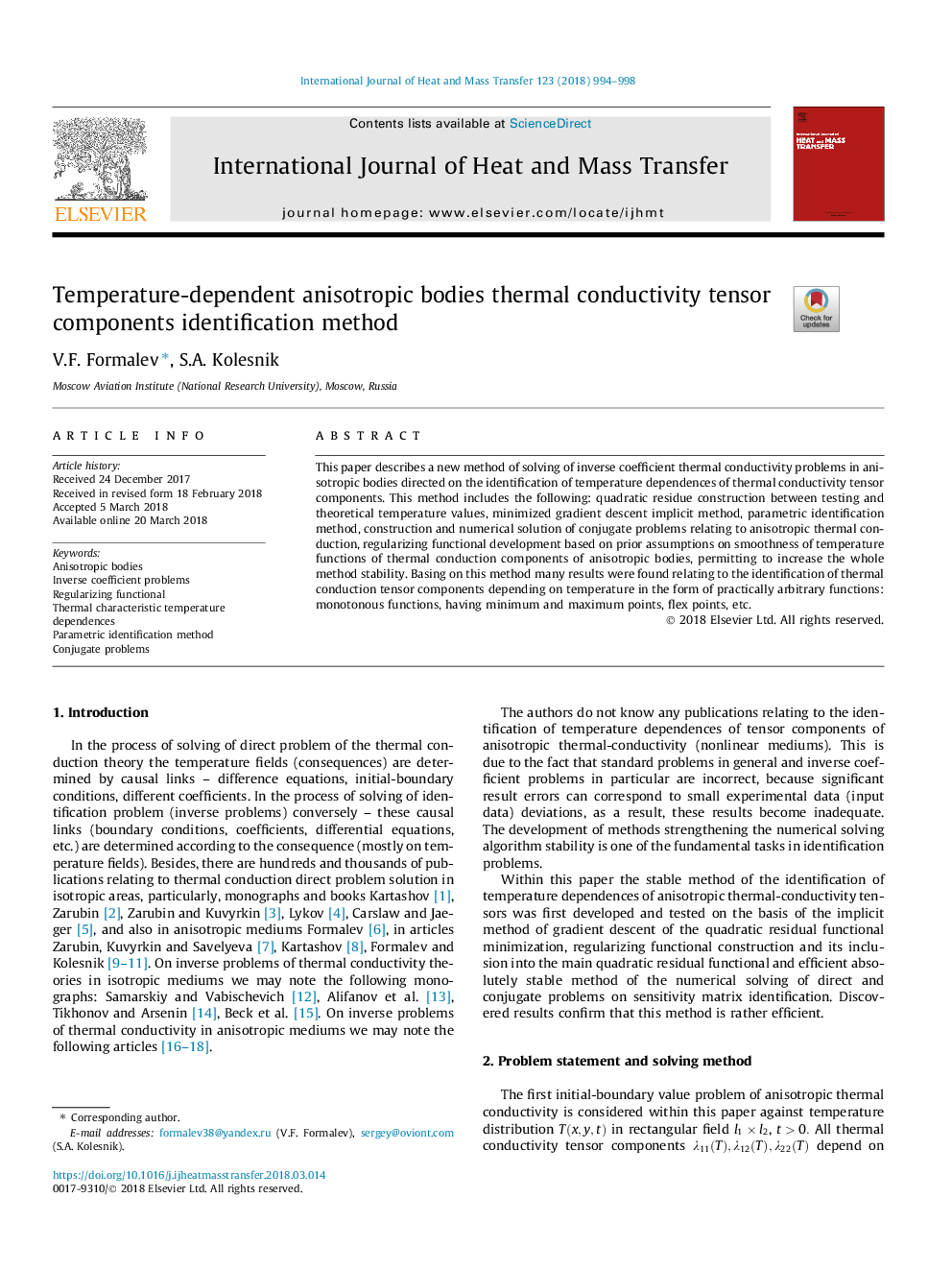| Article ID | Journal | Published Year | Pages | File Type |
|---|---|---|---|---|
| 7054338 | International Journal of Heat and Mass Transfer | 2018 | 5 Pages |
Abstract
This paper describes a new method of solving of inverse coefficient thermal conductivity problems in anisotropic bodies directed on the identification of temperature dependences of thermal conductivity tensor components. This method includes the following: quadratic residue construction between testing and theoretical temperature values, minimized gradient descent implicit method, parametric identification method, construction and numerical solution of conjugate problems relating to anisotropic thermal conduction, regularizing functional development based on prior assumptions on smoothness of temperature functions of thermal conduction components of anisotropic bodies, permitting to increase the whole method stability. Basing on this method many results were found relating to the identification of thermal conduction tensor components depending on temperature in the form of practically arbitrary functions: monotonous functions, having minimum and maximum points, flex points, etc.
Related Topics
Physical Sciences and Engineering
Chemical Engineering
Fluid Flow and Transfer Processes
Authors
V.F. Formalev, S.A. Kolesnik,
